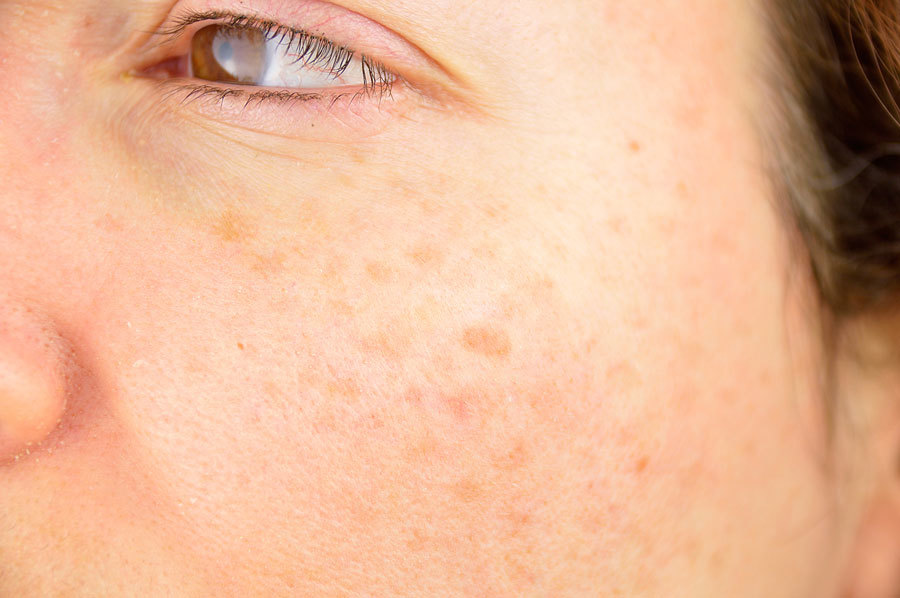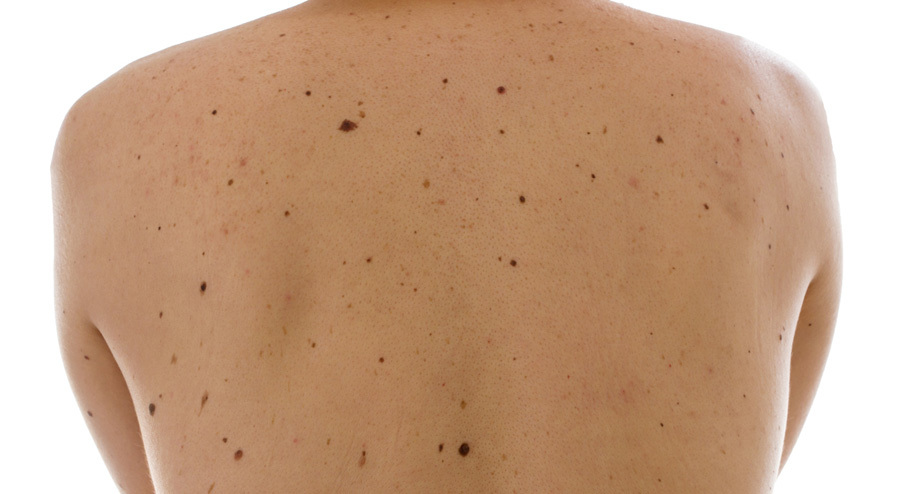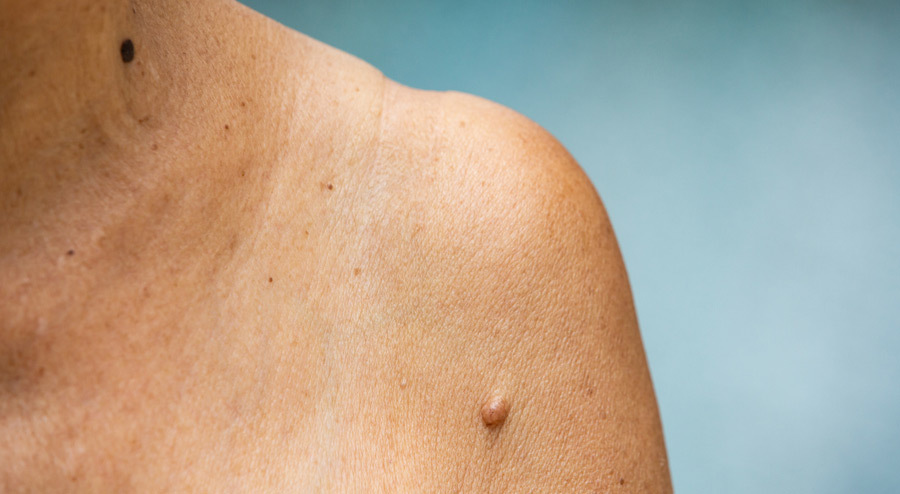 Almost everyone in the world will develop a mole or freckle (sometimes many) on their body as a result of sun exposure and/or genetics. And while they can both be entirely normal and are usually benign, it’s important to know the difference between them so you can figure out if you need to be concerned or not. There are certain indicators that both freckles and moles can be abnormal and that is what we are going to be exploring throughout the course of this article.
Almost everyone in the world will develop a mole or freckle (sometimes many) on their body as a result of sun exposure and/or genetics. And while they can both be entirely normal and are usually benign, it’s important to know the difference between them so you can figure out if you need to be concerned or not. There are certain indicators that both freckles and moles can be abnormal and that is what we are going to be exploring throughout the course of this article.
While it is true that the majority of freckles, moles, and other markings on the skin are completely benign and harmless, there are signs that indicate abnormalities that need to be addressed as soon as possible, in order to avoid further complications down the line.
What Exactly Are Freckles?
Freckles are small, flat, round beige or brown spots. Usually, they are found in groups on areas of the body that are more exposed to the sun (face, chest, arms,and legs.) More often than not, you will find that your freckles tend to lighten up quite significantly during the winter. Freckles are usually completely harmless and even look quite cute; however, many people prefer to eliminate them using topical creams or in more severe cases, laser resurfacing treatments.
What Is A Mole?
Depending on the type of mole, they are growths or lesions on the skin and the skin tones tend to be brown, black, or flesh-colored. Both cancerous and benign moles can appear anywhere on the body, either on their own or in groups. They can either be benign growths (non-cancerous) or, in some cases, they can also be malignant and lead to conditions like skin cancer. If you have noticed that your moles are changing shape, or becoming tender then it is really important that you make an appointment with your physician to have them checked out and removed if necessary. Catching a malignant mole early on is key to avoiding further and more serious complications.
Here is an easy checklist to help you monitor your moles for negative changes.
- Asymmetry
- Border
- Color
- Diameter
- Evolution
If you are still in doubt, then you can learn more about self-examination for skin cancer in this print out from The American Academy of Dermatology.
Now that we have clarified the basics of what moles and freckles actually are, here are 10 ways to tell the difference between freckles and moles.
Growths vs. Spots
 One of the main ways to identify moles or freckles on your skin is to carefully examine them for size and shape. Freckles will always be flat spots on the skin that come as a result of increased pigmentation of melanocyte cells. A mole, on the other hand, will be a raised growth like skin lesions. Many people also tend to get confused between moles and skin tags, so you need to use your intuition to an extent. For example, if a growth suddenly appears in an area of your body where there is no skin friction and it is tender, dark or it changes shape, then it is most likely a mole.
One of the main ways to identify moles or freckles on your skin is to carefully examine them for size and shape. Freckles will always be flat spots on the skin that come as a result of increased pigmentation of melanocyte cells. A mole, on the other hand, will be a raised growth like skin lesions. Many people also tend to get confused between moles and skin tags, so you need to use your intuition to an extent. For example, if a growth suddenly appears in an area of your body where there is no skin friction and it is tender, dark or it changes shape, then it is most likely a mole.
Genetics
Genetics do come into play with regards to moles. Babies can be born with moles or they can develop later on in life. Freckles are not seen in babies, as they develop as a result of exposure to the sun.
Tenderness
As a freckle will always be a flat spot on the skin due to changes in pigmentation, it will not be tender. If you notice that the skin is raised and your freckles are tender, then this is an indication that it is actually a mole and you should get it checked out as soon as possible.
Singular Growths vs. Clusters
People rarely have just one isolated freckle. Freckles tend to be found in groups, whereas a mole can appear on its own OR in groups.
Location
It is incredibly rare that you will find freckles on parts of the body that are always kept shielded from the sun. Most commonly freckles are found on the face (especially around the nose) chest and shoulders. If you notice marks on sections of your skin that never see daylight, it is highly unlikely that they will be freckles. Moles can appear all over the body, even in unlikely locations such as the genital area.
Age
We usually tend to develop freckles as children and they become a part of our identity. Moles, however, tend to develop later in life and they continue to become more prominent as we grow older.
Skin Color
Those with fair or very light complexions have less melanin in their skin. This means that when they expose themselves to the sun, more melanin is automatically produced often leading to more freckles instead of an even tan.
Malignant vs. Benign
 Possibly the most important difference between freckles and moles is that freckles are always benign. No exceptions! Moles can be malignant, although most of the time they aren’t. But there are proven direct links between shape-shifting moles and cancer. If you have a suspicious mole, you should get it checked out by your doctor.
Possibly the most important difference between freckles and moles is that freckles are always benign. No exceptions! Moles can be malignant, although most of the time they aren’t. But there are proven direct links between shape-shifting moles and cancer. If you have a suspicious mole, you should get it checked out by your doctor.
Aesthetic Appearance
If only all moles could make us look like Cindy Crawford! Sadly, it’s not always possible to determine exactly where a mole or a number of moles will appear and many people these days choose to have moles removed for aesthetic reasons. On the flip side of this, many people crave a cute smattering of freckles to define their individual appearance.
Permanence
With increasing reports in the media of just how harmful the sun can be to our skin, many people are already taking action and ensuring that they always keep their faces and shoulders protected from the sun. Very often, freckles will fade or even completely vanish after they stop receiving the sun’s rays, whereas a mole will only go away via surgical or laser removal.
When to Start Getting Concerned
With there being so similarities between moles and freckles, it can be tricky to work out when something is not right. As per the checklist above, if you notice any changes in moles, especially with regards to growth (anything over 6mm diameter should be checked immediately) you should make an appointment to see a skin specialist. If you have a malignant growth, then it can be easily and quickly removed before the problem spreads further, which is especially true with regards to cancerous moles. If you have a tendency to worry, then you should trust your intuition and have a check-up, as you can’t put a price on peace of mind.
In rare cases, moles will start to become sore or even bleed. This means that something is not right and if you ignore the signs, then it will only get worse. Fortunately, there are many resources available online to help you find a specialist in your local area and also to give you more insight into if you are dealing with freckles or moles.
How Are Moles Removed?
If your dermatologist recommends removing a mole, then they will be able to suggest the most appropriate course of action for your particular case. There are some sources of information that make it seem easy to remove your moles at home; however, this is not recommended and here’s why: if your reasons for removing your mole(s) are purely aesthetic then you probably don’t want to be left with scarring. If your dermatologist is concerned about your moles and, therefore, wants to remove them, then there is a chance they will want to perform a biopsy to rule out any serious issues. If you have deep-rooted moles, then they will be prone to bleeding etc. and will need to be taken off using a scalpel. This normally calls for local anesthetic and sterile conditions in which to perform the procedure. You may also require stitches following the procedure to ensure that the laceration heals up neatly and quickly.
Hundreds of old wives’ tales about tying a string around moles and letting them fall off on their own accord flood the Internet on a daily basis, but we strongly recommend you don’t attempt any of these questionable remedies, as it could result in infection or serious scarring.
Conclusion:
The difference between freckles and moles can be subtle, but hopefully, with the information outlined above you will be able to monitor your moles or freckles effectively and take action should you feel you need to. If your freckles bother you, then consider using a natural topical cream to lighten their appearance, as laser procedures tend to be costly and require several consecutive sessions to be effective. Finally, before you start picturing worst-case scenarios remember that while moles can potentially become cancerous, they are usually nothing to worry about and the average adult can have up to 40 completely normal non-cancerous moles on their body.
